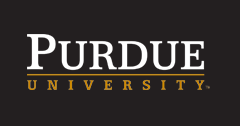Research Website
http://web.ics.purdue.edu/~sson/Son_Webpage/Welcome.html
Keywords
thermographic phosphors, HMX, RDX, laser-induced luminescence, surface temperature
Presentation Type
Poster
Research Abstract
Temperature measurements of propellants and explosives are necessary to create accurate models which lead to better understanding of energetic characteristics such as burning rate. Previous attempts at measuring surface temperatures of burning propellants and explosives using thermocouples have suffered from large uncertainty. Thermographic phosphor thermography employs ceramic powders called phosphors whose spectroscopic properties can be used to remotely and nearly non-intrusively measure temperature. Improved methods were developed for application of this technique to energetic materials to yield more accurate, two-dimensional temperature measurements. In this study, zinc oxide doped with gallium, a thermographic phosphor, was mixed into HMX and RDX powder, two propellant ingredients. These were excited by a laser while burning, and the resulting luminescence was captured by a high-speed camera. The ratio of the intensity of the luminescence at two wavelength bands was measured, and the corresponding temperature dependence was used to determine the surface temperature of the burning materials based on prior calibrations. High precision has been achieved, although further experiments must be performed to validate the accuracy of the data. Methods have been developed to achieve high resolution and more optimal signal strength for this application of phosphor thermography. The experimental data may lead to more accurate accepted values for reacting surface temperatures and improved modeling of these energetic materials.
Session Track
Combustion and Propulsion
Recommended Citation
Ethan A. Whitaker, Alex D. Casey, and Steven F. Son,
"Burning Surface Temperature Measurements of Propellants and Explosives using Phosphor Thermography"
(August 3, 2017).
The Summer Undergraduate Research Fellowship (SURF) Symposium.
Paper 30.
https://docs.lib.purdue.edu/surf/2017/presentations/30
Included in
Burning Surface Temperature Measurements of Propellants and Explosives using Phosphor Thermography
Temperature measurements of propellants and explosives are necessary to create accurate models which lead to better understanding of energetic characteristics such as burning rate. Previous attempts at measuring surface temperatures of burning propellants and explosives using thermocouples have suffered from large uncertainty. Thermographic phosphor thermography employs ceramic powders called phosphors whose spectroscopic properties can be used to remotely and nearly non-intrusively measure temperature. Improved methods were developed for application of this technique to energetic materials to yield more accurate, two-dimensional temperature measurements. In this study, zinc oxide doped with gallium, a thermographic phosphor, was mixed into HMX and RDX powder, two propellant ingredients. These were excited by a laser while burning, and the resulting luminescence was captured by a high-speed camera. The ratio of the intensity of the luminescence at two wavelength bands was measured, and the corresponding temperature dependence was used to determine the surface temperature of the burning materials based on prior calibrations. High precision has been achieved, although further experiments must be performed to validate the accuracy of the data. Methods have been developed to achieve high resolution and more optimal signal strength for this application of phosphor thermography. The experimental data may lead to more accurate accepted values for reacting surface temperatures and improved modeling of these energetic materials.
https://docs.lib.purdue.edu/surf/2017/presentations/30

